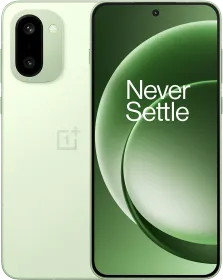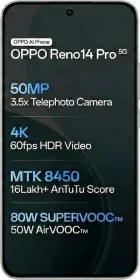vivo X200 FE vs. Xiaomi 15: Table of Contents
While smartphone manufacturers have focused on making large-screen flagships for years, it appears that compact flagships are making a comeback in the market. Earlier this year, we saw Apple launch the iPhone 16e, which, apart from its single rear-facing camera and a giant notch up front, is a pretty powerful phone for the price.
Now, Chinese manufacturers have raised the bar even higher, releasing compact flagships with superior displays, cameras, and batteries, with the latest example being the vivo X200 FE. Carrying forward the X200’s DNA, the X200 FE brings down all the flagship aspects to a more affordable price. But wait a minute, isn’t Xiaomi 15 (review) doing the exact same thing?
Today, we’ve compiled a detailed comparison between the X200 FE and the Xiaomi 15, which will help you choose between the two. So, without any further ado, let’s dive right into it.
Also Read: vivo X200 FE vs. OnePlus 13s: Versatile Cameras Or Exceptional Performance? Choose Wisely
vivo X200 FE vs. Xiaomi 15: Tech Specs
| vivo X200 FE | Xiaomi 15 | |
| Dimensions | 150.8 x 71.8 x 8 mm | 52.3mm x 71.2mm x 8.08mm |
| Weight | 186 grams | 191 grams |
| Colors | Amber Yellow, Luxe Gray, Frost Blue | Green, Black, White |
| IP Rating | IP68/IP69 | IP68 |
| Display | 6.31-inch LTPO AMOLED screen; 120Hz | 6.36-inch LTPO AMOLED display; 120Hz |
| Processor | MediaTek Dimensity 9300+ (4nm) | Snapdragon 8 Elite (3nm) |
| Software | Funtouch OS 15 | HyperOS 2.0 |
| Camera | Rear: 50MP + 50MP + 8MPFront: 50MP | Rear: 50MP + 50MP + 50MPFront: 32MP |
| Battery Capacity | 6,500 mAh Si/C | 5,240 mAh |
| Charging Speed | 90W wired | 90W wired + 50W wireless |
| Starting Price | Rs. 54,999 | Rs. 64,999 |
vivo X200 FE vs. Xiaomi 15: Design
Dimensions & Weight

- vivo X200 FE: 150.8 x 71.8 x 8 mm; 186 grams
- Xiaomi 15: 152.3mm x 71.2mm x 8.08mm; 191 grams
Between the tw phones, the X200 FE is a tad slimmer and lighter.
Materials
Both phones feature an aluminum frame with a glass front/back panel. While the X200 FE boasts Schott Xensation protection on the front, the Xiaomi 15 comes with Xiaomi Shield Glass.
Design
Looking at the front, you’ll notice both phones have a similar style, thanks to the punch-hole cutout at the top of the screen and symmetrical bezels.

On the back, the vivo X200 FE features a blacked-out, pill-shaped camera module that houses two camera sensors, with the third located to the right (beneath a cutout in the panel itself).
The Xiaomi 15, on the other hand, features a square-shaped camera cutout that holds all three sensors together. And of course, both phones proudly display their brands in the bottom left corner of the back panel.
Also Read: OnePlus Nord 5 vs. Moto Edge 60 Pro: Which Mid-Ranger Should You Choose?
Colors
- vivo X200 FE: Amber Yellow, Luxe Gray, Frost Blue
- Xiaomi 15: Green, Black, White
IP Rating
- vivo X200 FE: IP68/IP69
- Xiaomi 15: IP68 rating
vivo X200 FE vs. Xiaomi 15: Display

With the vivo X200 FE, you’ll enjoy a 6.31-inch LTPO AMOLED screen, offering sharp visuals thanks to its 461 ppi pixel density, an impressive local peak brightness of 5,000 nits, and a smooth adaptive refresh rate up to 120Hz. Plus, it supports HDR10+ content and 2,160Hz PWM dimming for a more comfortable viewing experience.
Right beside it, the Xiaomi 15 brings a slightly larger 6.36-inch LTPO AMOLED display. Its 460 ppi pixel density, 3,200 nits peak brightness, and 120Hz refresh rate make everything look smooth and vibrant. You’ll also benefit from Dolby Vision, HDR10+ support, TUV Rheinland certifications for low-blue light, and a flicker-free screen with DC Dimming—great for binge-watching your favorite shows!
The X200 FE comes with a 10-bit panel, while the Xiaomi 15 steps it up with a 12-bit panel, meaning it can display even more colors. While you might not notice the difference in day-to-day use, it’s still a cool perk for anyone who loves vibrant visuals.
Also Read: Oppo Reno 14 vs. vivo V50 vs. Galaxy A36: Which Mid-Range 5G Handset Is Right For You?
vivo X200 FE vs. Xiaomi 15: Performance

vivo has opted for the Dimensity 9300+ (4nm) SoC for its latest compact flagship, which features a 3.4GHz prime core, the Immortalis-G720 MC12 GPU, up to 16GB of LPDDR5X RAM, and 512GB of UFS 3.1 storage.
On AnTuTu 10, the processor scores around 2.07 million points, and on GeekBench 6, it gets 2,230/7,540 points for single and multicore tests. In everyday use, you’ll find it plenty powerful for gaming, recording 4K 60fps videos, and just about anything else you throw at it—no worries!

With the Xiaomi 15, you get a slightly more futureproof chipset, the Snapdragon 8 Elite (3nm) SoC, which comprises two 4.32 GHz prime cores, the Adreno 830 GPU, Hexagon NPU for on-device AI processing, 12GB of LPDDR5X RAM, and 512GB of UFS 4.0 storage.
It’s worth noting that the Xiaomi 15 features UFS 4.0 storage, which is significantly faster than the UFS 3.1 storage on the X200 FE. During our time with the device, we achieved an AnTuTu 10 score of 2.41 million, while the handset scored 2,662/8,391 points in the single/multi-core Geekbench 6 CPU test.
In my opinion, there’s nothing that a regular user would do that requires more power than the Dimensity 9300+ processor on the vivo X200 FE. However, the Snapdragon 8 Elite on the Xiaomi 15 can get those things done faster.
Also Read: Samsung Galaxy M36 5G vs. Oppo K13 5G: Which Handset Offers More Value For Your Money?
vivo X200 FE vs. Xiaomi 15: Software


Out of the box, the X200 FE runs on Funtouch OS 15 based on Android 15. It offers features such as Circle to Search, AI Eraser 2.0, and Live Call Translation, among other AI-powered capabilities. With the handset, buyers should get four major OS updates and five years of security patches, which, although decent, isn’t as good as the industry-best set by Samsung and Google.
On the Xiaomi 15, you get HyperOS 2.0 based on Android 15, which offers features like AI Speech Recognition, AI Subtitles, AI Writing, and Google’s Circle to Search functionality. Like the X200 FE, the Xiaomi 15 is also poised to receive four years of operating system updates, but the company has pledged to provide six years of security updates, making the phone usable for a longer duration.
vivo X200 FE vs. Xiaomi 15: Optics
vivo X200 FE Camera Configuration

- Primary Camera: 50MP (f/1.9, OIS)
- Secondary Camera: 50MP (f/2.7, OIS) secondary camera paired with 3x optical zoom lens
- Tertiary Camera: 8MP (f/2.2) ultrawide sensor
- Front Camera: 50MP (f/2.0) selfie shooter with autofocus
The X200 FE can record 4K videos at up to 60 fps from all its cameras, making it a versatile smartphone for video recording. The camera uses ZEISS optics, along with ZEISS T lens coating, which enhances its performance. Additional features include Portrait Video, Astro Photo, and Micro Movie.
Xiaomi 15 Camera Configuration

- Primary camera: 50MP (f/1.6, 23mm, OIS) OmniVision OVX9000 Light Fusion sensor
- Secondary camera: 50MP (f/2.0, OIS) Samsung ISOCELL JN5 telephoto sensor with 2.6x optical zoom
- Tertiary camera: 50MP (f/2.2, 115°) ISOCELL JN1 ultrawide camera
- Front camera: 32MP (f/2.0) OmniVision OV32B selfie shooter
Just like vivo has partnered with ZEISS, Xiaomi has collaborated with Leica to tune the cameras on its latest compact flagship. With the Snapdragon 8 Elite, the handset can also process enough information to record 8K videos in up to 30 fps. Additional features include 10-bit Dolby Vision HDR video recording, 10-bit LOG recording, AI Image Expansion, and AI Erase Pro, among others.
Also Read: POCO F7 vs. iQOO Neo 10: Which is THE Ultimate Performer Under 35K?
vivo X200 FE vs. Xiaomi 15: Battery & Charging Speed

While the X200 FE doesn’t do as well as the Xiaomi 15 in the optics section, it redeems itself with a 6,500 mAh Si/C battery. It is commendable how the company has managed to fit such a massive battery into a compact smartphone, when we have full-fledged flagships with smaller batteries on the market.
The battery supports 90W wired charging, which charges the phone from 0% to 100% in under an hour. However, the handset does not support wireless charging.
The Xiaomi 15’s 5,240 mAh Si/C battery is no match for the X200 FE. But what’s good is that it supports 90W wired and 50W wireless charging. Given that the X200 FE’s battery is 24% larger than the Xiaomi 15, it should last significantly longer than the X200 FE between charges.
vivo X200 FE vs. Xiaomi 15: Connectivity

Connectivity options on the vivo X200 FE include 5G, 4G, Wi-Fi 7, Bluetooth v5.4 (A2DP, LE, aptX HD), GPS, GLONASS, NFC, IR Blaster, and a USB Type-C 2.0 port.
Xiaomi 15 supports 5G, 4G, Wi-Fi 7, Bluetooth v6.0 (A2DP, LE, aptX HD, aptX Adaptive, LHDC 5), GPS (L1 + L2), GLONASS, NFC, IR Blaster, and a faster USB Type-C 3.2 port.
Also Read: vivo T4 Ultra vs. realme GT 7: Which Flagship Killer Offers More Value For Your Money?
vivo X200 FE vs. Xiaomi 15: Price & Conclusion
vivo X200 FE Price

Currently available for pre-orders, the device will go on sale from July 23, 2025. Flipkart is offering a Rs. 5,500 off on the handset via its co-branded card with Axis Bank, bringing down the pricing of the base model under Rs. 50,000.
If you’re on the market for a compact smartphone that has a bright AMOLED screen, offers a decently-powerful CPU, vivo’s camera app, and all the related features (including a dedicated optical zoom lens), and you’re okay with getting four years of software support, you can’t go wrong with the vivo X200 FE.
Another major selling point is the device’s 6,500 mAh battery, which should easily surpass a day of moderate usage and last up to two days of light usage. With this battery, the X200 FE should be able to outlast several mainstream flagships on the market (despite being a compact smartphone), which is fantastic.
Last but not least, you can purchase the vivo X200 FE’s 512GB variant at a lower price (if you’re looking for the best deal).
Xiaomi 15 Price

Currently available with a Rs. 6,000 instant discount via HDFC bank credit cards on Amazon, the Xiaomi 15 provides more value for your money, primarily because it features a more capable screen, the Snapdragon 8 Elite processor, and a third 50MP sensor.
The 512GB of onboard storage will ensure that you don’t have to spend any time freeing up some space to download apps or capture more videos/photos. Furthermore, the phone features a faster USB-C port that can help while transferring data from the phone to an external storage device.
You might have to compromise a bit on the usage time, since the phone has a smaller battery, but that also results in faster charging (in around 50 minutes). If you’ve used a HyperOS device in the past, the user interface on the Xiaomi 15 should feel quite familiar.
You can follow Smartprix on Twitter, Facebook, Instagram, and Google News. Visit smartprix.com for the latest tech and auto news, reviews, and guides.


































